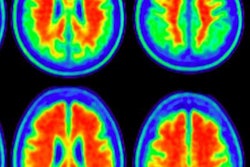With the help of PET imaging, researchers at the University of Cambridge believe they have confirmed the process by which tau proteins spread in the brain to advance Alzheimer's disease, according to a study published on 5 January in the journal Brain.
The buildup of tau and another abnormal protein, beta amyloid, have been linked to the development of Alzheimer's disease. The theory is beta amyloid occurs first, which encourages the appearance and spread of tau, and destroys nerve cells thus leading to cognitive and memory problems.
One theory is tau develops first in one location in the brain and then spreads to another, with the hypothesis known as transneuronal spread. There are, however, other schools of thought that postulate tau is produced in nerve cells, or that a lack of nutrients to the brain region could be the cause. Thanks to the power of PET, researchers can now compare the viability of these different theories.
In this study, first author Dr. Thomas Cope and colleagues analyzed functional connections in the brains of 17 Alzheimer's patients to evaluate how they are wired using PET with a fluorine-18-AV-1451 radiopharmaceutical. The resulting PET images supported transneuronal spread as the culprit of dementia.
"If the idea of transneuronal spread is correct, then the areas of the brain that are most highly connected should have the largest buildup of tau and will pass it on to their connections," Cole said.
The findings suggest the progression of Alzheimer's disease may be slowed or stopped through drug therapy of tau as it travels along neurons.
To see if the same phenomenon occurred with other neurodegenerative diseases, the researchers looked at 17 patients afflicted with progressive supranuclear palsy (PSP), a rare condition that affects balance, speech, and vision, but not memory. With this disease, tau tends to collect only at the base of the brain rather than throughout the organ.
The researchers found tau buildup in the PSP patients supported the alternative hypotheses to tau distribution rather than the transneuronal spread theory. In another finding, the researchers found brain connections became more random with greater tau buildup, which could explain the confusion and muddled memories of Alzheimer's patients, the researchers reported.



















